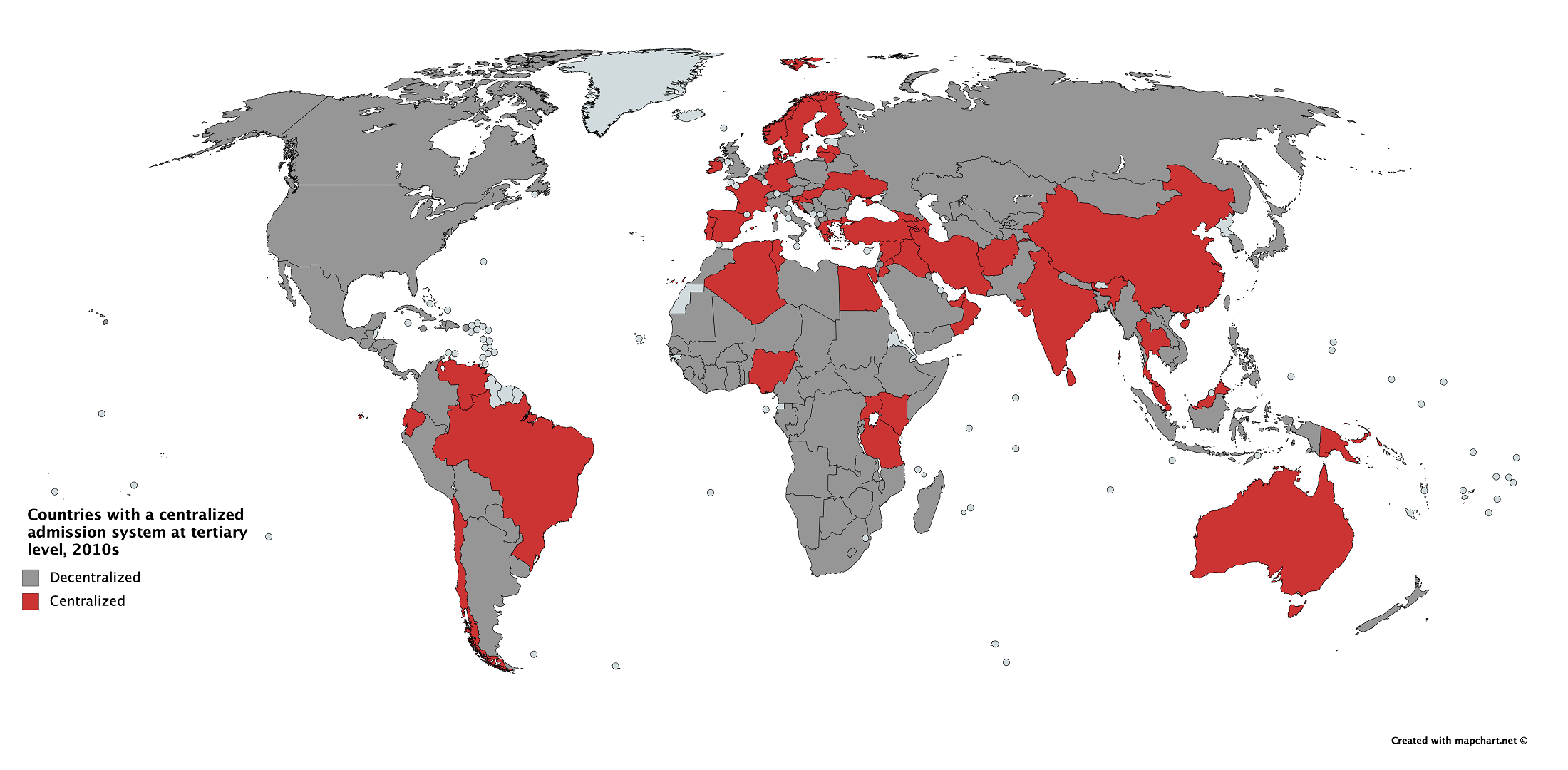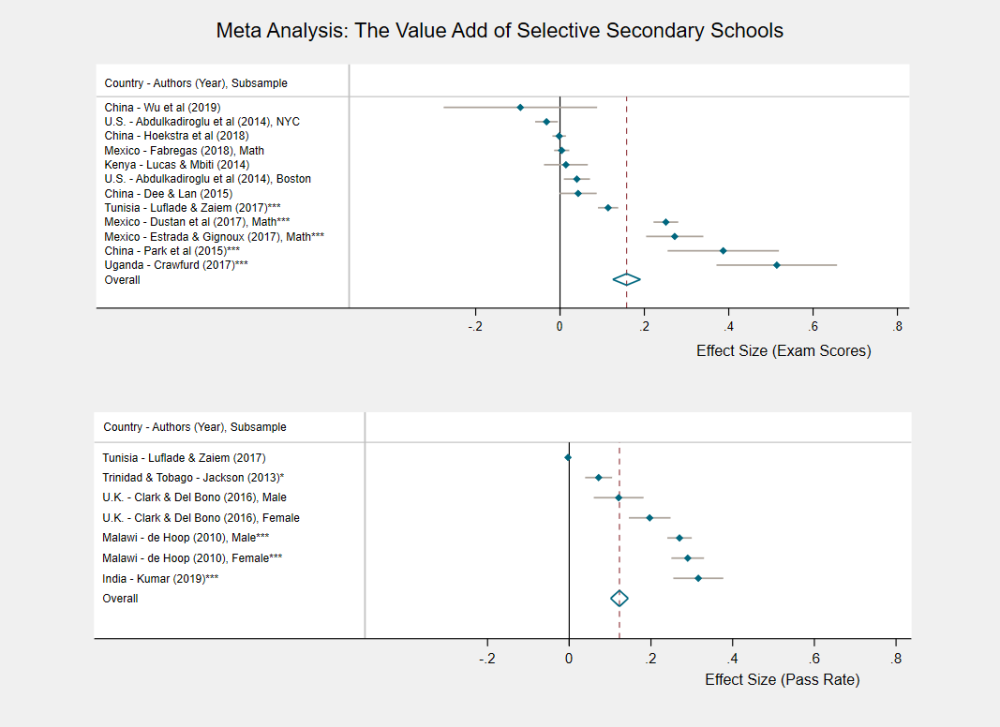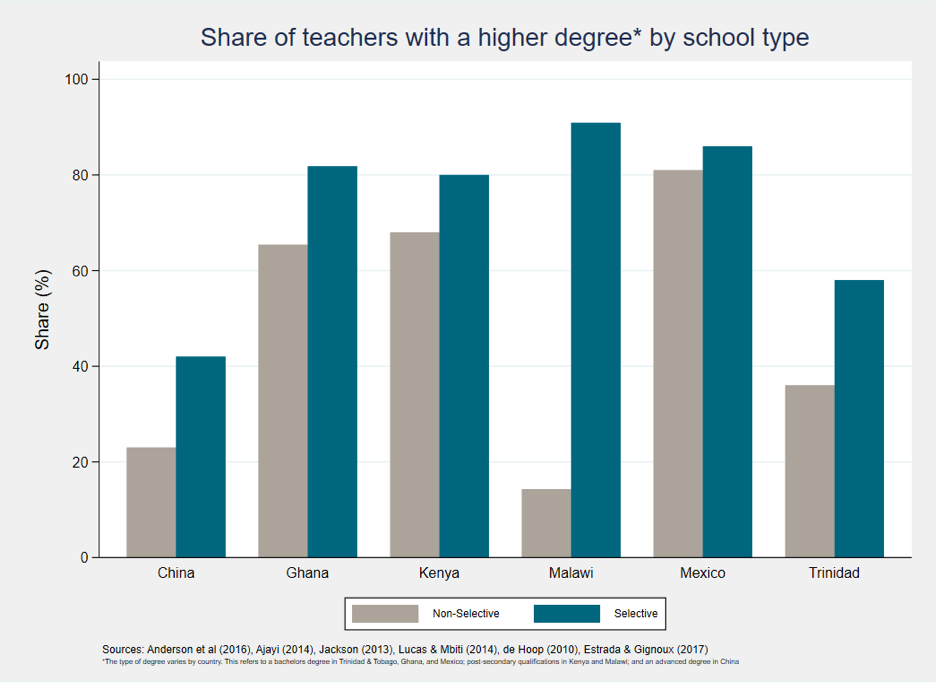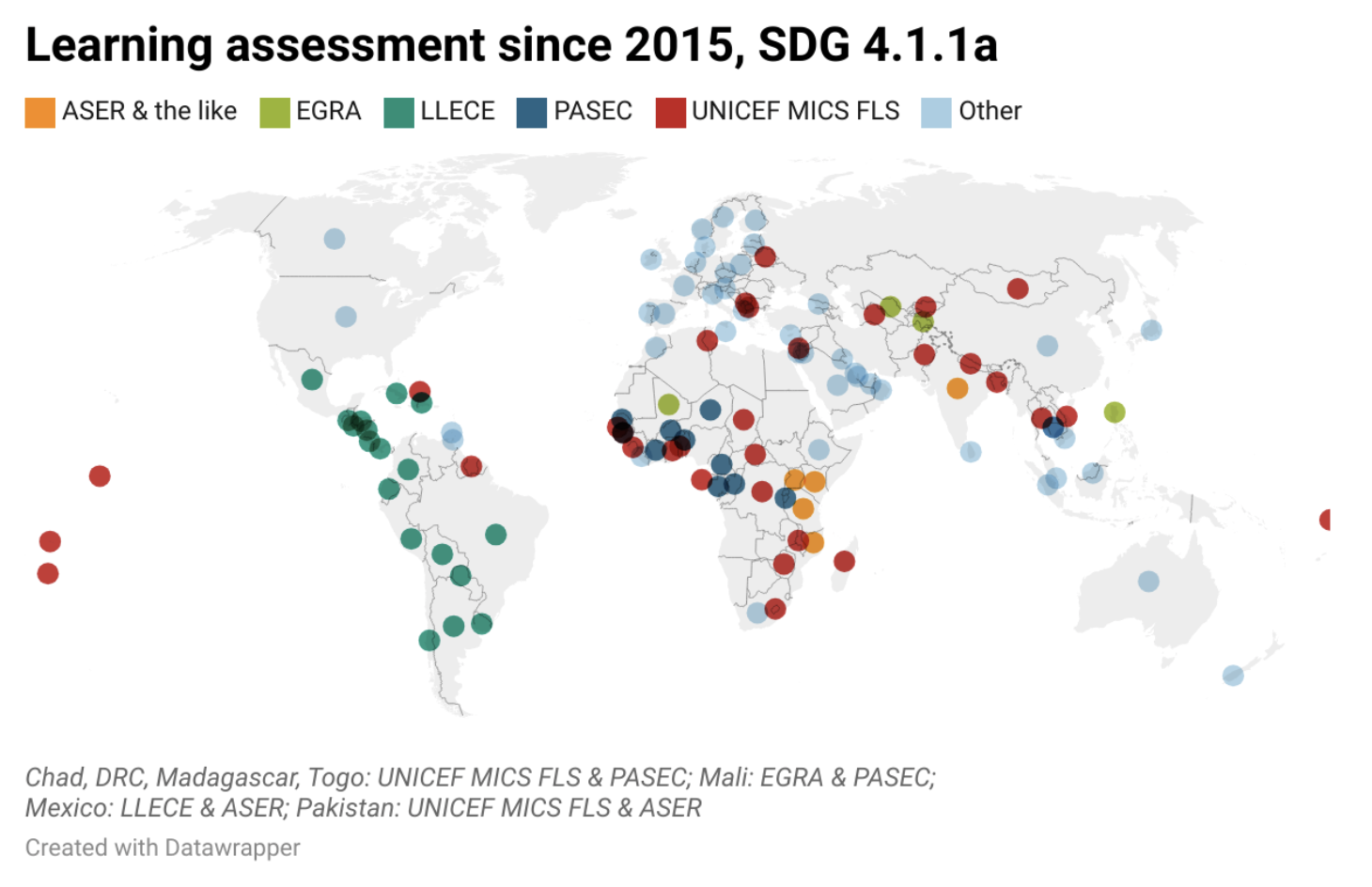Recommended
Last year, over 100,000 children applied for 336 places at the Pangani Girls High School—a “National School” in Nairobi, Kenya. Thousands of miles away, the Henrietta Barnet School for Girls—a “Grammar School” in London, England—received more than 3,000 applications for 100 places. National schools and grammar schools are elite, highly selective, government-funded state schools. Beautiful buildings and supposedly aspirational academic outcomes mean the limited places are fiercely fought over and thousands of children in both Kenya and England are coached and tutored every year to get the test scores they need for admission into these schools.
Politicians often claim elite schools are vehicles for social mobility. They believe they pluck out the poor-but-brilliant and endow them with an education that sets them up to achieve life outcomes equal to their more advantaged peers. Elite schools’ popularity with politicians is not surprising, since many attended them. Two of Kenya’s four presidents and six of its eight vice presidents attended a national school. Four Ghanaian presidents and two other African presidents, including Robert Mugabe, call one of Ghana’s “Category A” (formerly “Colonial”) schools their alma mater. Five British prime ministers attended English grammar schools.
We look at the evidence on effects on the kids who attend elite schools—and on the kids who don’t—to explore whether they live up to their hype. We suggest they produce at best a small bump in learning outcomes, but at a high cost (including to the children who don’t get in) and without doing a particularly good job of targeting the poor. We then consider what this means for policymakers in developing countries planning to rapidly scale up provision of secondary education.
Elite public schools have limited impact on value-added test scores
We reviewed 15 studies across 12 countries and 4 continents that examine school systems where a proportion of students—typically between 3 and 25 percent—are selected into elite public schools on the basis of their performance in primary school-leaving examinations or other admissions tests.
In most places, attending an elite school has little or no impact on value-added secondary exam scores. In other words, students in elite schools did not make any more academic progress than similar students in normal government schools. There are a few exceptions, especially for girls. In Trinidad and Tobago, peer effects for girls attending elite schools were positive and girls (but not boys) were more likely to pass high-stakes exams.
But there is also some evidence of negative spillover effects. Analysis by the Education Datalab in England indicates that children who attend grammar schools make more progress than they would have done, but that children in selective areas who do not attend grammar schools make less progress than they would if they were in an area without a grammar school.
Beyond test scores, we don’t know if elite schools improve life outcomes
Of course, we’re interested in life outcomes, not just test scores. Unfortunately, there are very few studies that examine the long-run effects of attending elite schools, and none that we found from developing countries (although in the UK, Jones et al (2018) find no long-term effects on health and wellbeing of attending grammar schools). We also don’t know much about the signalling effect of elite schools and how they might influence aspirations and career-enhancing networks.
The literature does tell us a little more about whether elite schools keep kids in school for longer. Selection into Malawi’s conventional schools is heavily correlated with a retention rate 50 percent higher than their non-selective counterparts (de Hoop 2010) and grammar school attendance in the UK translated to at least one additional year of schooling (Clark and Del Bono 2016). Kumar (2019) found that India’s model schools increase the probability of joining pre-university by 11.5 percentage points. Kids being in school for longer—even if they’re not learning very much—is a good thing. It’s a decent proxy for life outcomes, since we know that staying in school for more years has effects on wages and improves maternal and child health outcomes. But there are not positive effects on retention across all the studies we reviewed: Lucas and Mbiti (2014) found similar completion rates across elite and non-elite schools in Kenya; and Dustan et al (2017) note that low-income students in elite schools in Mexico City were 12 percentage points more likely to drop out than their peers in traditional schools.
Children from low-income backgrounds aren’t getting their fair share of places at elite schools
If one of the main goals of a selective public education system is improving social mobility and increasing the life chances of low-income children, how many of them actually get in? In short: not very many. Disadvantaged children are disproportionately unlikely to secure places at elite state schools.
In Mexico City, low-income students were less likely to apply to elite schools (Dustan et al (2017), and those admitted were 12 percentage points more likely to drop out than their non-elite school counterparts. In New York City and Boston, poverty rates at “Exam Schools” are well below the average across all public high schools. In England, less than 3 percent of children attending grammar schools are entitled to free school meals, compared with 17 percent of children in neighbouring schools. And in Kenya, just half of national school graduates attended a public primary school, compared to 93 percent of all primary graduates. Put more starkly, children who attend private primary school in Kenya (a crude proxy for advantage) have a 3 percent chance of enrolling in a national school, compared with a 0.0025 percent chance for children from state primary schools.
These data paint a dismal picture. It’s not good enough that children from disadvantaged backgrounds have such disproportionately low access to good schools. If elite schools can’t be integrated into the broader system, schools (and, for that matter, universities) that receive public funding should do a better job at equalising access—for instance through a lottery or quota system.
Mediocre performance comes at a high cost
Elite schools often receive much more funding from government than other schools. In Kenya, the Ministry of Education invests more than twice as much per student in national schools versus the less selective county schools. Kapsabet Boys, a national school and the alma mater of Deputy President William Ruto, received KSH 50 million ($481,400 USD) during the 2016-17 financial year for infrastructure improvements while other schools received an average of KSH 1 million ($9,600 USD). And it’s not only government funding that is higher. Despite the government’s commitment to free secondary education, many public secondary schools in Kenya charge parents for boarding and supplies, with national schools charging much higher fees than other schools.
Of course, the full “cost” to government is not just pupil funding. Most of the studies we reviewed showed that elite government schools are also receiving more inputs from government in other forms, particularly teacher allocation. In Malawi nearly all teachers at selective conventional schools have a post-secondary school degree, compared to just one in six teachers at non-selective schools. Pupils get a textbook each in conventional schools, whilst they are shared between two pupils in non-selective schools. In Kenya, national schools offer an average of 16 subjects for students taking the Kenya Certificate of Secondary Education exam while less-selective district schools offer only 10 (Lucas and Mbiti, 2014)
But one education minister is scrutinising the cost versus the value of elite selective schools with great skepticism. “Daanish Schools,” an initiative launched by the last administration in Punjab, Pakistan, which reportedly cost ten times more than a traditional public school, have been earmarked for closure by the new government so that resources can be allocated more equally across all schools.
Elite schools: a popular policy that policymakers should resist
Selective schools are a popular public policy with parents, despite the low chance their child has of securing a place. Of course, it is up to politicians, not parents, to make education policies that work for everyone, rather than for the select few who get a lucky dice roll. But rather than distributing limited resources available for secondary schools uniformly across all schools, many governments currently choose to disproportionately fund a small number of elite, selective secondary schools.
While the evidence on the effect of elite schools is mixed, it suggests that starting, expanding, and continuing this kind of programme is neither a cost-effective nor a pro-poor policy option. These schools typically cost the government substantially more than other schools, and cost parents more in some places too. While higher spending can result in better academic outcomes—although often less good than they are perceived to be—bright but disadvantaged children simply don’t stand a good chance of getting a place. The high cost causes a negative spillover of the selective system on the children left behind, with fewer resources and teachers available for everyone else. Perhaps worst of all, elite schools reinforce the pernicious belief that not all children are capable of learning. Without really changing this fundamental mindset it seems hard to imagine how learning for all could ever be achieved.
As secondary schooling undergoes massive expansion in many developing countries, it could be wise for policymakers to heed the plans of the Punjab Education Department. Admittedly, abolishing elite schools might not be a politically acceptable solution in places like Kenya and Ghana, where they are a source of national pride and perceived as an egalitarian and inclusive way of producing the next generation of elites. But ending their disproportionately high public funding would be a good start for countries looking to equalise secondary education opportunities. Governments could implement measures to help families navigate complex admissions systems, so poor kids aren’t disadvantaged by mistakes made in their applications. They should aim to improve state primary schools, so that children from disadvantaged backgrounds have the same opportunity to achieve high test scores as their richer peers. Alongside, governments could reform admissions—as discussed by Lee Crawfurd in his first blog in this series—and facilitate equality in access to schools, for example by abolishing selection altogether or by mandating schools to allocate places to kids from poor families, giving all children equal access to good government schools.
Thanks to Arthur Baker, Adrienne Lucas, and Justin Sandefur for their helpful comments.
Disclaimer
CGD blog posts reflect the views of the authors, drawing on prior research and experience in their areas of expertise. CGD is a nonpartisan, independent organization and does not take institutional positions.







